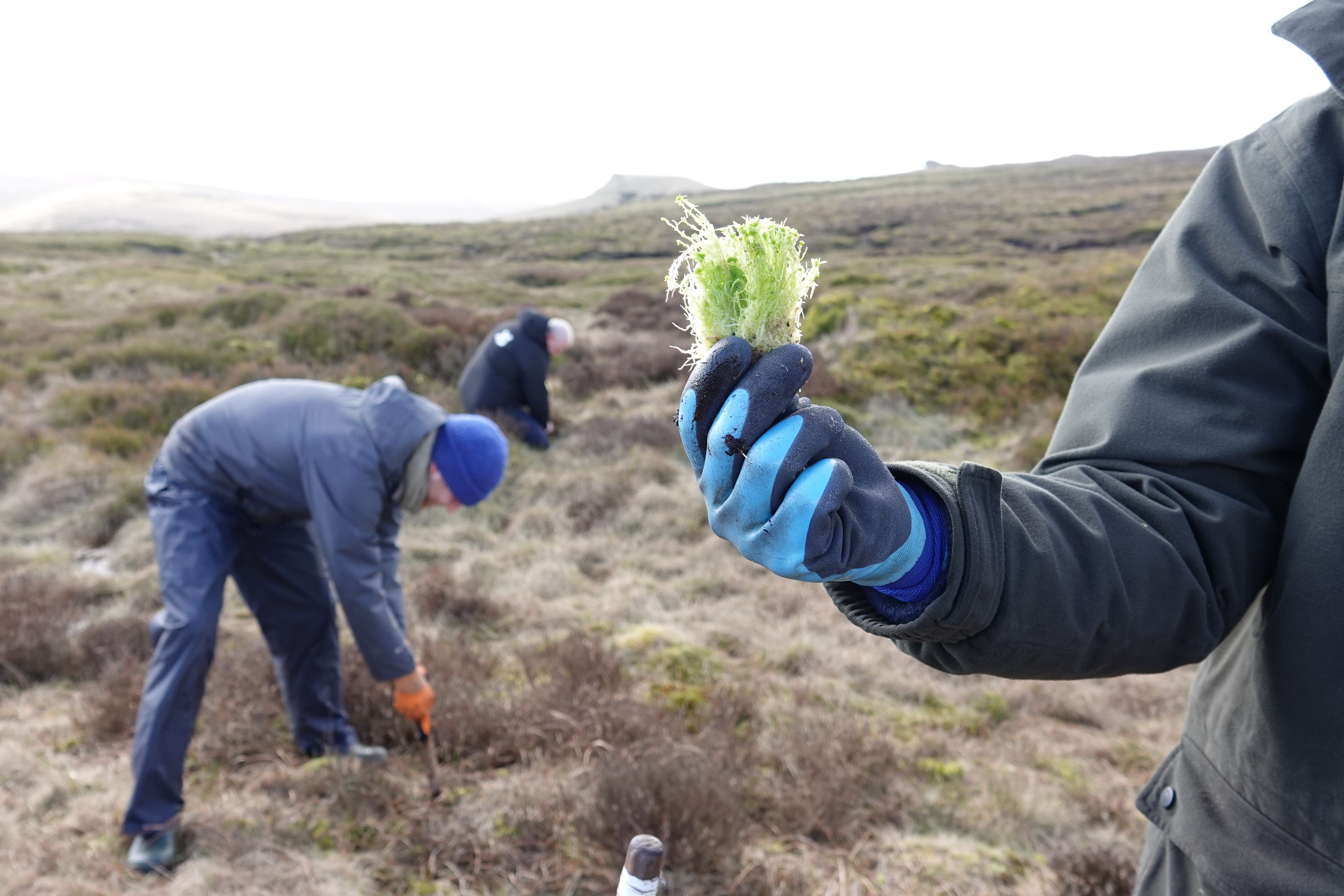Moss ‘speed bumps’ planted on Kinder Scout to curb flood risk and restore peat
Hundreds of thousands of sphagnum moss plugs are being planted into the landscape famous for the 1932 mass trespass to restore peatland.

Your support helps us to tell the story
From reproductive rights to climate change to Big Tech, The Independent is on the ground when the story is developing. Whether it's investigating the financials of Elon Musk's pro-Trump PAC or producing our latest documentary, 'The A Word', which shines a light on the American women fighting for reproductive rights, we know how important it is to parse out the facts from the messaging.
At such a critical moment in US history, we need reporters on the ground. Your donation allows us to keep sending journalists to speak to both sides of the story.
The Independent is trusted by Americans across the entire political spectrum. And unlike many other quality news outlets, we choose not to lock Americans out of our reporting and analysis with paywalls. We believe quality journalism should be available to everyone, paid for by those who can afford it.
Your support makes all the difference.Hundreds of thousands of sphagnum moss “speed bumps” are being planted to restore peatland and slow the flow of water on Kinder Scout, the National Trust has said.
The charity is restoring 526 hectares (1,300 acres) of peatland on Kinder Scout, a moorland that forms the highest point in Derbyshire and is famous for the mass trespass of 1932, which led to the creation of the country’s national parks.
Around 130,000 sphagnum moss plugs have been planted in the first phase of the project which will see 800,000 put into the landscape to create healthier blanket bog, and slow the flow of rainwater across the land.
The National Trust, which looks after Kinder Scout, said that once the sphagnum moss plugs have established, they will act as tiny “speed bumps” for rainwater falling on the moors.
Instead of running down in a straight line, the water will be forced to weave its way slowly down the moorland slopes, helping to alleviate flooding in nearby local towns and villages including Glossop, Whaley Bridge and Edale.
The moss, which can hold up to 20 times its own weight in water, will also help create the right conditions for peat to actively form, allowing the site to lock up carbon more effectively.
It will provide sufficiently wet conditions to allow a mix of moorland plants such as heather, bilberry and cotton grass to grow, and create habitat to support wildlife such as dragonflies, golden plover, frogs and lizards, the trust said.
The restoration builds on previous work and a study carried out by the Moors for the Future partnership and the University of Manchester using data from an outdoor laboratory on Kinder Scout.
The study found that once sphagnum moss has grown, water takes more than two hours longer to make its way off the moors compared to bare peat.
This is because it creates a rougher, more textured surface which slows the flow of water and delays rainwater arriving in streams and rivers all at the same time from the same direction, the charity said.
Craig Best, general manager for the National Trust in the Peak District, said it was “absolutely critical” that the work to restore the peatland happened now.
“This year alone, we’ve seen dramatic weather events seriously affect thousands of households across the Midlands and beyond,” he said.
“As we’re faced with the likelihood of more significant bouts of extreme rainfall, it is stark reminder that we need urgent action to increase our resilience in a changing climate.
“In good condition, the moorlands of the Peak District can offer part of the solution to reduce carbon emissions and reduce the risk of flooding for people living downstream, so it’s vital that we continue to do as much restoration as quickly as we can.”
Work has now paused to prevent disrupting the area’s ground nesting birds during the breeding season.
It will resume in August, with more planting, as well as building dams in gullies and the distribution of heather brash – or cut heather – seed, lime and fertiliser, to stabilise bare peat by lowering its acidity temporarily and allow moorland plants to grow.
The project, which is expected to be completed in 2025, will also restore footpaths, and is part of the National Trust’s work to restore blanket bog across the Peak District.
It has been funded by funding from Natural England’s nature for climate peatland grant scheme and money the National Trust has allocated for restoration works on Kinder Scout.